Showing 1–10 of 197 results
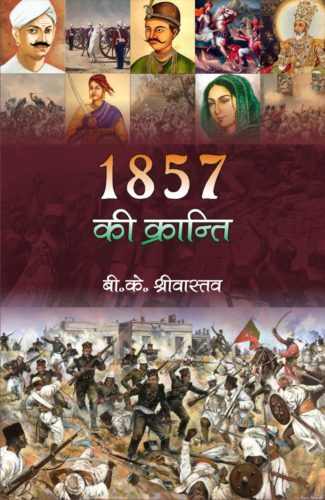
इस पुस्तक में 1857 की क्रान्ति को समग्रता के साथ एक नवीन ढंग से कतिपय नवीन तथ्यों के साथ बहुत ही रोचक शैली में सरल सहज एवं सुबोध ढंग से प्रस्तुत किया गया है।
इस पुस्तक में 1857 की क्रान्ति को समग्रता के साथ एक नवीन ढंग से कतिपय नवीन तथ्यों के साथ प्रस्तुत किया गया है। अजीमुल्ला खाँ एवं रंगोजी बापू ने किस तरह इंग्लैण्ड में क्रान्ति की पूर्व-पीठिका तैयार की? 1857 की क्रान्ति में बैजाबाई सिंधिया की क्या भूमिका थी? नवाब वाज़िद अली साहब के मन्त्री अली नक्की खाँ ने किस प्रकार बैरकपुर छावनी के सैनिकों को क्रान्ति हेतु प्रेरित किया? 1857 की क्रान्ति के आरम्भ में गंगादीन की क्या भूमिका थी? कानपुर का सतीचैरा एवं बीबी घर हत्याकाण्ड एवं झाँसी के झोंकन बाग हत्याकाण्ड में किस तरह अंग्रेज़ मौत के घाट उतारे गए। बेग़म ज़ीनत महल ने किस प्रकार अपने पति बहादुरषाह जफ़र को क्रान्ति का नेतृत्व करने हेतु प्रेरित किया? बेग़म हज़रत महल ने किस प्रकार अपने सहयोगियों के साथ ब्रिटिष सेना के छक्के छुड़ाए? रानी लक्ष्मीबाई ने भारत को अपना देष मानते हुए किस प्रकार सर्वप्रथम स्वराज की बात की एवं टीकमगढ़ की रानी लड़ई सरकार के दीवान नत्थे खाँ के घमण्ड को चूर-चूर किया? जब सागर के किले में 370 अंग्रेज़ स्त्री-पुरुष एवं बच्चों के घिरे होने का समाचार इंग्लैण्ड पहुँचा तो किस प्रकार उन्होंने सर्वश्रेष्ठ सेनापति ब्रिगेडियर जनरल ह्यूरोज़ को इन्हें मुक्त कराने भेजा? षाहगढ़ राजा बखतवली एवं बानपुर राजा मर्दनसिंह ने किस तरह अंग्रेज़ों को अत्यधिक परेषान किया कि वे उनके नाम से काँपने लगे। तात्या टोेपे ने अंग्रेज़ सेनापतियों को किस प्रकार खिजाया? ऐसा क्या हुआ कि अंग्रेज़ों ने रानी लक्ष्मीबाई एवं तात्या टोपे को सर्वश्रेष्ठ वीर होने की संज्ञा दी? किस प्रकार षडयन्त्र द्वारा अंग्रेज़ांे ने तात्या टोपे को पकड़वाया? उक्त समस्त घटना-क्रम को बहुत ही रोचक षैली में सरल सहज एवं सुबोध ढंग से इस पुस्तक में प्रस्तुत किया गया है।

इस पुस्तक में 1857 की क्रान्ति को समग्रता के साथ एक नवीन ढंग से कतिपय नवीन तथ्यों के साथ बहुत ही रोचक शैली में सरल सहज एवं सुबोध ढंग से प्रस्तुत किया गया है।
इस पुस्तक में 1857 की क्रान्ति को समग्रता के साथ एक नवीन ढंग से कतिपय नवीन तथ्यों के साथ प्रस्तुत किया गया है। अजीमुल्ला खाँ एवं रंगोजी बापू ने किस तरह इंग्लैण्ड में क्रान्ति की पूर्व-पीठिका तैयार की? 1857 की क्रान्ति में बैजाबाई सिंधिया की क्या भूमिका थी? नवाब वाज़िद अली साहब के मन्त्री अली नक्की खाँ ने किस प्रकार बैरकपुर छावनी के सैनिकों को क्रान्ति हेतु प्रेरित किया? 1857 की क्रान्ति के आरम्भ में गंगादीन की क्या भूमिका थी? कानपुर का सतीचैरा एवं बीबी घर हत्याकाण्ड एवं झाँसी के झोंकन बाग हत्याकाण्ड में किस तरह अंग्रेज़ मौत के घाट उतारे गए। बेग़म ज़ीनत महल ने किस प्रकार अपने पति बहादुरषाह जफ़र को क्रान्ति का नेतृत्व करने हेतु प्रेरित किया? बेग़म हज़रत महल ने किस प्रकार अपने सहयोगियों के साथ ब्रिटिष सेना के छक्के छुड़ाए? रानी लक्ष्मीबाई ने भारत को अपना देष मानते हुए किस प्रकार सर्वप्रथम स्वराज की बात की एवं टीकमगढ़ की रानी लड़ई सरकार के दीवान नत्थे खाँ के घमण्ड को चूर-चूर किया? जब सागर के किले में 370 अंग्रेज़ स्त्री-पुरुष एवं बच्चों के घिरे होने का समाचार इंग्लैण्ड पहुँचा तो किस प्रकार उन्होंने सर्वश्रेष्ठ सेनापति ब्रिगेडियर जनरल ह्यूरोज़ को इन्हें मुक्त कराने भेजा? षाहगढ़ राजा बखतवली एवं बानपुर राजा मर्दनसिंह ने किस तरह अंग्रेज़ों को अत्यधिक परेषान किया कि वे उनके नाम से काँपने लगे। तात्या टोेपे ने अंग्रेज़ सेनापतियों को किस प्रकार खिजाया? ऐसा क्या हुआ कि अंग्रेज़ों ने रानी लक्ष्मीबाई एवं तात्या टोपे को सर्वश्रेष्ठ वीर होने की संज्ञा दी? किस प्रकार षडयन्त्र द्वारा अंग्रेज़ांे ने तात्या टोपे को पकड़वाया? उक्त समस्त घटना-क्रम को बहुत ही रोचक षैली में सरल सहज एवं सुबोध ढंग से इस पुस्तक में प्रस्तुत किया गया है।
This monograph ‘A Catalogue of Prehistoric Tools‘ is a unique presentation of a rare and important collection donated by Late Dr. A.P. Khatri to the Indraprastha Museum of Art and Archaeology, New Delhi. The entire collection comprises of thousands of prehistoric tools from different parts of the world including rich river (Narmada, Godavari etc.) valley collection from India.
A selection of the representative types has been made from most of the sites distributed in four continents of the world namely, Europe, Africa, Asia and America. These tools are included in the catalogue and elaborately described with good line drawings. In some cases notes are also given to place the collection in their proper context. Appendices with relevant information and maps are to highlight the text. Colour photographs of all these tools are illustrated in the plates at the end.
An introduction ‘A Brief Survey of World Prehistory‘ has been provided as background study.
The catalogue will enormously benefit the scholars, researchers and students of Prehistoric Archaeology
Published in 1862, Beveridge’s A Comprehensive History of India is an important landmark in the historiography in modern India. In writing it Beveridge did not trust to previous compilations but derived his materials as much as possible from original and official sources. Written after due research in a perspicuous style, Beveridge has narrated the history of India beginning with its earliest period and continued to be mutiny of 1857, thus making his history a complete and comprehensive history of India. Besides, Beveridge’s interpretation of history is more objective and impartial than many historians of India who wrote before and after him. As a result it became possible for Beveridge to see the many events of Indian history without being biased. That is why Beveridge will find today more readers than, say, historians like Mill’s and Vincent Smith.
Published in 1862, Beveridge’s A Comprehensive History of India is an important landmark in the historiography in modern India. In writing it Beveridge did not trust to previous compilations but derived his materials as much as possible from original and official sources. Written after due research in a perspicuous style, Beveridge has narrated the history of India beginning with its earliest period and continued to be mutiny of 1857, thus making his history a complete and comprehensive history of India. Besides, Beveridge’s interpretation of history is more objective and impartial than many historians of India who wrote before and after him. As a result it became possible for Beveridge to see the many events of Indian history without being biased. That is why Beveridge will find today more readers than, say, historians like Mill’s and Vincent Smith.
“Published in 1862, Beveridge’s A Comprehensive History of India is an important landmark in the historiography in modern India. In writing it Beveridge did not trust to previous compilations but derived his materials as much as possible from original and official sources. Written after due research in a perspicuous style, Beveridge has narrated the history of India beginning with its earliest period and continued to be mutiny of 1857, thus making his history a complete and comprehensive history of India. Besides, Beveridge’s interpretation of history is more objective and impartial than many historians of India who wrote before and after him. As a result it became possible for Beveridge to see the many events of Indian history without being biased. That is why Beveridge will find today more readers than, say, historians like Mill’s and Vincent Smith. “
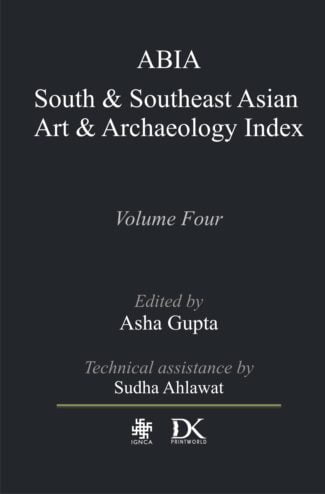
Volume four contains 1344 records on South and Southeast Asia selected out of 1800 records from the ABIA South and Southeast Asian Art and Archaeology Index database. Volume four has been compiled by the ABIA project team at IGNCA New Delhi. It includes all forms of scholarly publications, ranging from survey works to small but important articles in composite books and journals published in India between 2006 and 2011. Subjects include pre- and protohistory, historical archaeology, ancient art history, modern art history, material culture, epigraphy and palaeography, numismatics and sigillography (seals). The bibliographic descriptions (with the original diacritics), keywords and annotations have made this reference work a reliable guide to recently published scholarly work in the field.
Volume four contains 1344 records on South and Southeast Asia selected out of 1800 records from the ABIA South and Southeast Asian Art and Archaeology Index database. Volume four has been compiled by the ABIA project team at IGNCA New Delhi. It includes all forms of scholarly publications, ranging from survey works to small but important articles in composite books and journals published in India between 2006 and 2011. Subjects include pre- and protohistory, historical archaeology, ancient art history, modern art history, material culture, epigraphy and palaeography, numismatics and sigillography (seals). The bibliographic descriptions (with the original diacritics), keywords and annotations have made this reference work a reliable guide to recently published scholarly work in the field.
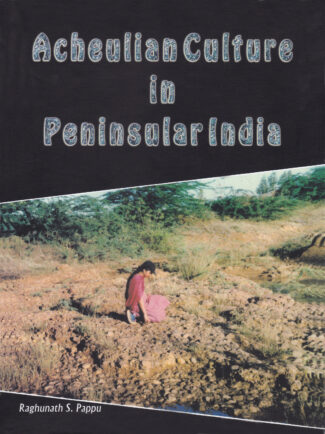
This research work studies the Acheulian Culture system in India, examining the cultural material of the Acheulian phase in its ecological setting to throw light on the distribution pattern, habitats, Quaternary deposits mammalian and hominid remains, land use and subsistence, site formation process, genesis and chronology of the Acheulian system.
The Indian sub-continent, particularly the Peninsular India, is recognised as one of the richest areas of Acheulian occupation in the Old World. This research work is a detailed study of the Acheulian Culture system in India signifying the earliest cultural occupation here. The book examines the cultural material of the Acheulian phase in its ecological setting to throw light on the distribution pattern, nature of habitats, Quaternary deposits, mammalian and hominid remains, land use and subsistence, site formation process, genesis and chronology of the Acheulian cultural system. Incorporating his own field observations over the last three decades and more as well as integrating and synthesising the available data and evidence on Acheulian culture, Dr. R.S. Pappu presents a comprehensive understanding of the Acheulian system and, in general, behavioural patterns of early hunting and food gathering communities. He also provides an account of the progress of Palaeolithic research in India since the first discovery of Palaeolithic settlement by Foote in 1863, tracing the major projects and contributions of noted Indian geo-archaeologists.
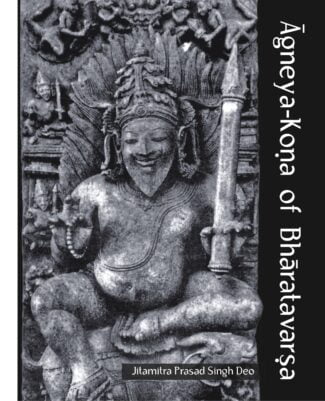
This book is a study on the cultural developments of Agneya-Kona (the south-east India), where Orissa is the centre, and their contributions to the development of humanity. It studies the rise and spread of different cults and states that the culture of Agneya-Kona was older than the Sumerian Civilization.
The book focuses on the cultural developments of Agneya-Kona (the south-east India) and their contributions to the development of humanity, and highlights the concocted history of Bharatavarsha, especially of Agneya-Kona.
The author projects many artefacts to substantiate his theory. Many archaeological findings Þ the pre-historic rock painting of Gudahandi, images of female figurines, along with circular discs, and nude female figurines are cases in point. Female principle was worshipped in the Mahanadi Valley both in aniconic and iconic forms.
Agneya-Kona has contributed significantly to the growth of the tantric worship. In the pre-historic rock painting of Gudahandi, there is a trace of Yoga, especially Kundalini Yoga. The book details the spiritual and yogic culture of Orissa, the formative phase of Purushottama Jagannatha culture, the impact of Narasimha culture, yoni tantra traditions of the Central Mahanadi Valley and the spiritual relationship of Kalahandi with Candipur Tara-Pitha of Birbhum.
A Sumerian temple that imbibed the form of Lord Purushottama Jagannatha is in highlight, and the author makes a strong statement that the culture of the region is older than the Sumerian Civilization.
The book is a source of inspiration for archaeologists and historians, who want to study more about south-east India, and students, teachers and researchers of arts and culture.
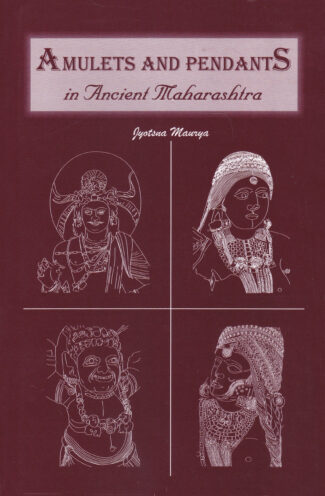
The book documents Indias rich tradition of ornamentation as reflected in its numerous and varied collection of amulets and pendants recovered from archaeological excavations in Maharashtra. It examines the different types of amulets and pendants excavated, techniques used in making them, and their parallels in literary and sculptural representations.
The book documents Indias rich tradition of ornamentation as reflected in its numerous and varied collection of amulets and pendants recovered from archaeological excavations in Maharashtra. It studies the significance of these ornaments as a visible expression of the artistic excellence and cultural wealth of the ancient Indian civilisation particularly at the time of the great Mauryan and Satvahana dynasties. Discussing the evolution of these portable charms against their socio-economic and religious background, the authoress examines the different types of amulets and pendants excavated, the techniques used in making them, their parallels in literary and sculptural representations, and Buddhist influence on them. Giving insights into the sources of raw materials used in these charms, she takes up in detail the trade relations of a specific site with other contemporary sites. With a number of figures and maps, the work promises to be useful to both scholars and students of Indology focussing on facets of Indian culture.
| There are no products |